Grapefruit trees need well-drained soil that never remains soggy after irrigation or rain. Fast-draining soil also results in faster leaching of nutrients. In applying fertilizer, you should first check the age of the Grapefruit tree. The tree’s age is different, and the fertilizer application is also different. When the Grapefruit tree becomes young, the fertilizer needs to be applied in small quantities. Nitrogen fertilizer is the leading fertilizer, and phosphorus and potassium fertilizers are complementary.
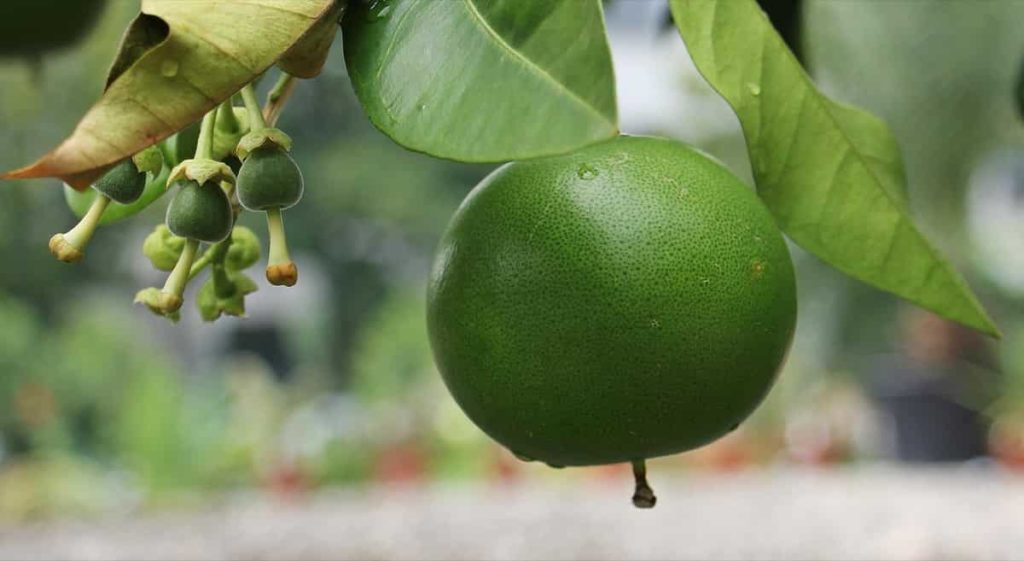
To ensure the number of branches and leaves, achieve the objective of stable and high production. Then when the duration of the flowering of the Grapefruit tree, the total differentiation, and the duration of the young fruit, we need to increase the amount of phosphorus fertilizer. If the tree is too strong, it is essential to control the nitrogen fertilizer applied. Let’s check out the best fertilizer for Grapefruit trees.
Nitrogen has the most significant impact on Grapefruit growth and shape; it is the most used factor for producing leaves, flowers, and fruits. Phosphorus, mainly concentrated in young tissue, uses energy, and takes nutrients; it is also essential for cell distribution and growth. Potassium and calcium are used in relatively large quantities by Grapefruit to produce leaves, flowers, and fruits. Magnesium is necessary for photosynthesis and stimulates phosphorus use, while sulfur is part of many proteins and improves root growth, excitement, and stiffness.
Recognizing and correcting nutrient deficiencies as quickly as possible makes a Grapefruit tree recover as soon as possible. Nitrogen deficiency first appears as leaf paling. When zinc is deficient, chlorosis is developed between the veins of leaves and shoots, with nodes being placed closely together and with small leaves. The potassium deficiency appears as yellow leaves with the edges tilted downwards, while magnesium deficiency appears as yellowing of the leaf starting from the leaf tip and margin.
In case you missed it: Growing Grapefruit In Backyard Of Home Garden
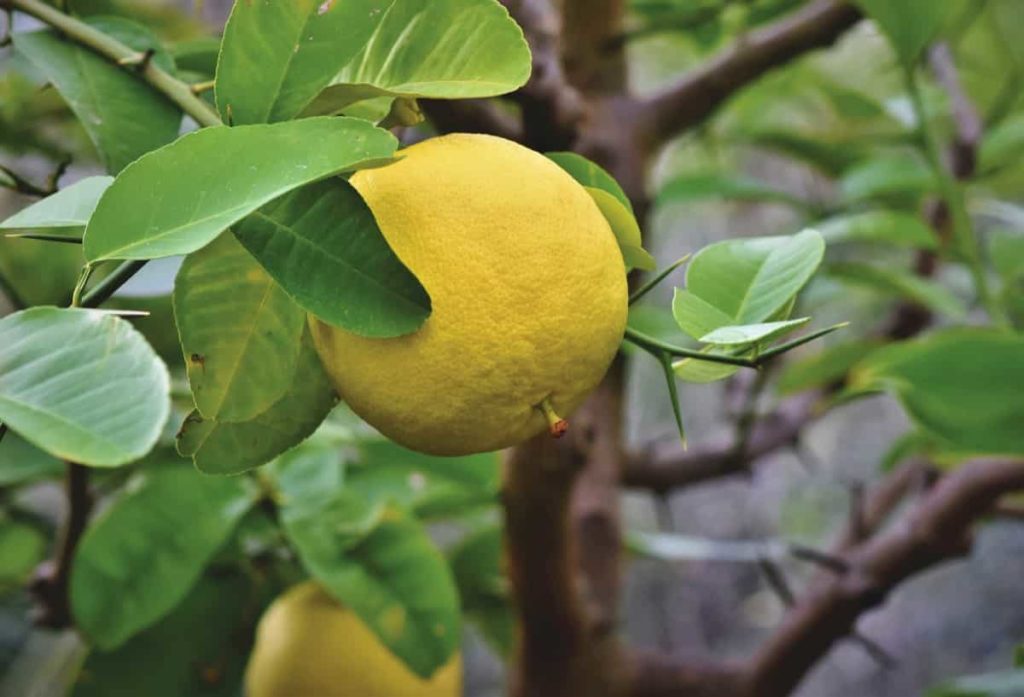
Best fertilizer for Grapefruit trees
Organic fertilizers for Grapefruit
While coffee grounds can help Grapefruit trees by adding acidity and nitrogen, it is better to let coffee grounds break into a pile of manure first before applying them to the soil around Grapefruit trees or other plants. Coffee grounds have reasonable amounts of nitrogen, phosphorus, and potassium. Moreover, coffee grounds are slightly acidic and can help reduce soil pH, which Grapefruit trees like. Use potash and Epsom salts to grow sweet Grapefruits. Dissolve two tablespoons of Epsom salts in 2 and 1/2 gallons of water.
Eggshells are high in calcium, so they are great for citrus trees to promote healthy flowers and leaves. You can use eggshells and citrus fertilizer to provide extra calcium to your plants. When applying farmyard manure, you should focus on completely rotten farmyard manure. However, the material of significant elements such as nitrogen, phosphorus, and potassium in farmyard manure is relatively small. It cannot meet the requirements of the Grapefruit trees for these elements. Chicken and steer manure contains high salts contents that can damage roots and cause leaves to turn yellow and die on the edges.
If you use manure, mix it in the soil under the tree. You can always apply 1 to 2 inches of manure on top of the soil for a good balance of nutrients. Keep the manure several inches away from the trunk. Bone meal is a good source of phosphorus, but it also contains nitrogen and calcium, which require Grapefruit trees to thrive. Grapefruit trees are not fond of heavy mulch, hoe, or spades; your lawn clippings or manure lightly soil around the tree’s trunk, but be careful not to dig into the root system.
In case you missed it: Best Fertilizer for Citrus Tree: Homemade, Organic, Natural, Liquid, Compost, How and When to Apply
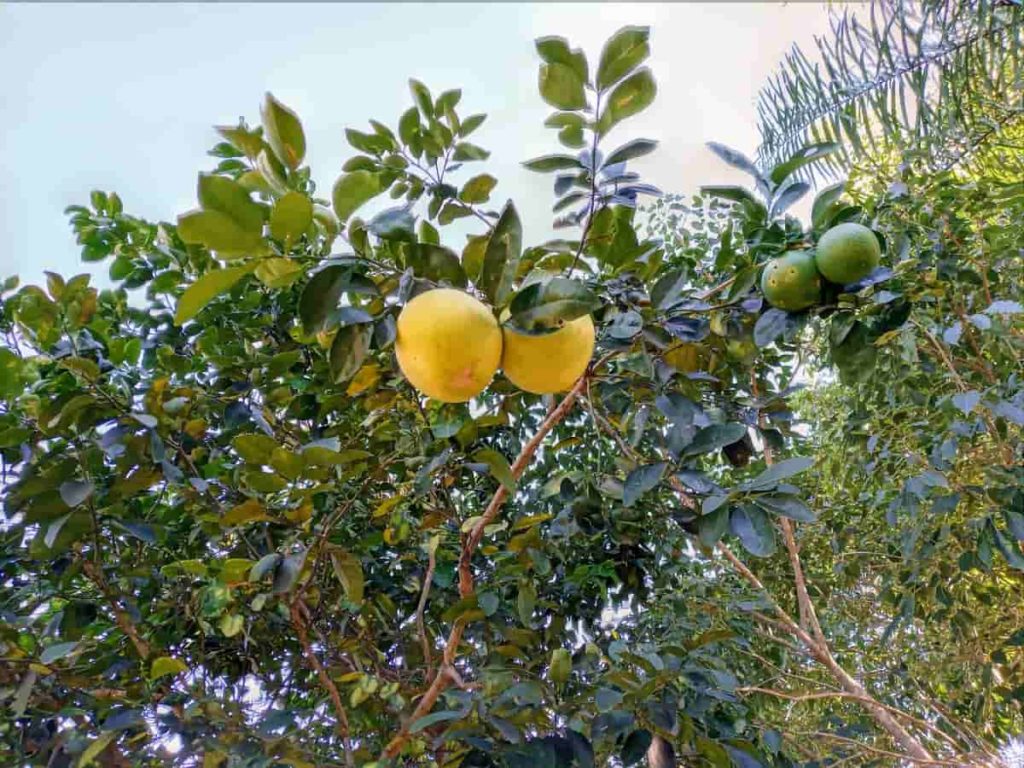
Commercial fertilizers for Grapefruit
NPK ratio
Fertilizers are well balanced for the Grapefruit trees, with large, almost equal amounts of nitrogen, phosphorus, potassium, and many micronutrients. These products show significant triple formula ratios such as 6-6-6, 8-8-8, or 10-10-10. They are also often prominently described with micronutrients. If your tree is planted on the lawn and its leaves turn yellow, spray it with two tablespoons of urea (46-0-0-0).
Do not apply it during hot weather and too much urea or apply; otherwise, you may burn leaves. The Grapefruit trees do not require a lot of phosphorus. When you plant trees, mix about 1 and 3/4 cup phosphate fertilizer in the soil. Above the roots, add about 453 grams of phosphate to the soil every three to four years. Since the Grapefruit feeder has roots 6 to 8 inches above the soil, you have to be careful not to damage them.
Micronutrient deficiency
If the area between the veins of the Grapefruit leaves turns yellow, called leaf chlorosis, your tree may be prone to iron deficiency. A lack of manganese causes the area between the veins to turn yellow-green. Zinc deficiency causes a yellow glow between the veins of large leaves and small leaves on the heads of branches.
Spray on leaves in spring or summer when they are at least two-thirds of their last size with micronutrient spray containing iron, manganese, and zinc. There are helpful sprays to correct iron chlorosis, be careful it can burn leaves, so you should dilute them and spray them several times. Helpful sprays to correct only iron chlorosis, but they are acidic and can burn leaves, so you should thin them and spray them several times.
Grapefruit fertilizer schedule
Base fertilizers are usually applied before and after harvesting fruits, and the amount of fertilizer applied is half of the annual fertilizer application. You need to use a lot of green manure, compost, circle manure, cake fertilizer, and other late-impact fertilizers. And with quick-acting nitrogen and phosphorus fertilizer. Organic fertilizers have lasting and stable effects, effectively improving soil’s physical and chemical properties and enhancing soil sustainability.
In case you missed it: Best Fertilizer for Grapes: Homemade, Organic, Compost, Liquid, Natural, NPK, When and How to Apply
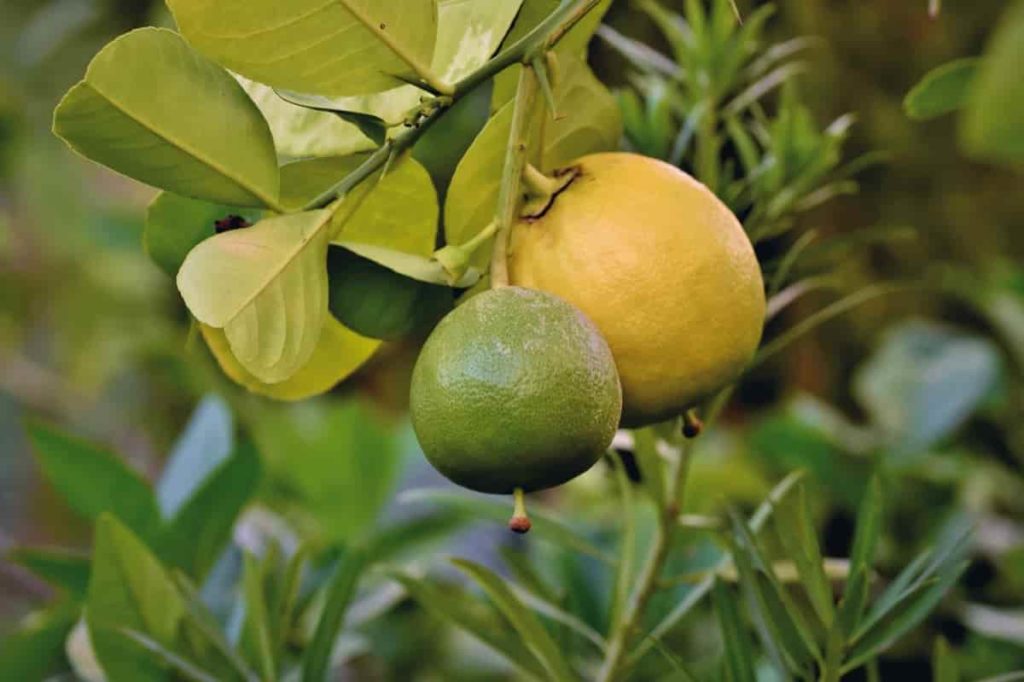
It plays a very crucial in improving the production and quality of the Grapefruit. Avoid using fertilizer for the first spring of the tree, then feed it lightly with organic manure or fertilizer during the first summer. Feel free to fertilize the tree once during the following spring and then in the summer. To enhance the soil’s nutrients available to the Grapefruit tree, scatter 1 cup of ammonium sulfate fertilizer (21-0-0) around the tree in the first year, divided into three or four applications.
In the second year, increase the quantity to 2 cups and 3 cups in the third year. Continue feeding one cup of ammonium sulfate every year of the age of trees applicable in February, May, and September. The Grapefruit trees are small and have young roots. Therefore, we need to apply a diligently diluted application. In the first year can be applied 5 to 6 times. Fruit trees usually require fertilizing four times. Germination fertilizer is also known as pre-blooming fertilizer, usually from February to March.
This time fertilization is generally based on the high-speed nitrogen fertilizer. You should apply animal manure, which is appropriate with urea. Once the Grapefruit plant is established, you should use low nitrogen fertilizer. Nutrients should be available in the soil to support the early growth of Grapefruit trees. Fertilizer applications then take place in early summer and then late summer to ensure slow-release fertilizer grains break down to keep the soil full of minerals for roots.
First-year, apply about 226 grams of 10-10-10 fertilizer per tree and reapply every six weeks until October. In the second year, apply 450 grams of 10-10-10 fertilizer per tree during the growing season. In the third year, start feeding at the start of the growing season 1kg of fertilizer per tree, every nine weeks to October. Feed at a rate of 450 grams of fertilizer for each year of the tree’s age.
How to fertilize Grapefruit in pots
Dwarf Grapefruit tree varieties can grow in pots. It is easy to buy Grapefruit trees, but growing them to maturity can be difficult for a home gardener. Growing a Grapefruit tree may be difficult but not impossible if you know how to provide it with ideal growing conditions. Also, keep in mind that the size of a Grapefruit tree is 15 to 20 feet high when it reaches maturity, while a dwarf Grapefruit tree can grow smaller when planted in a container. Both standard and dwarf Grapefruit trees thrive in well-drained, loamy soil.
In case you missed it: Top 12 Fruits to Grow in Aquaponics
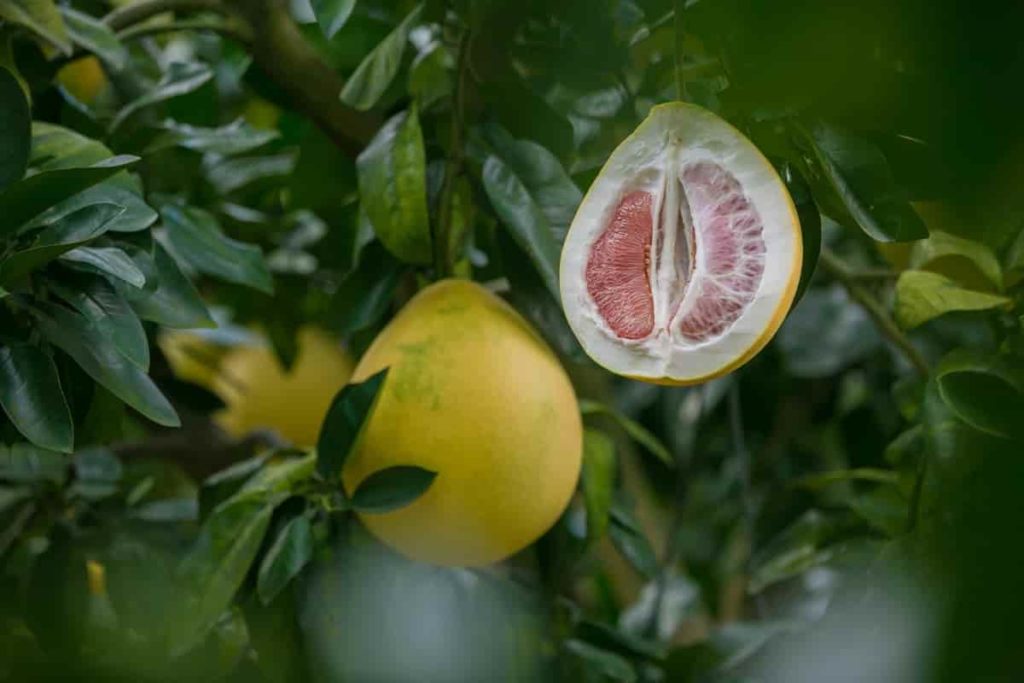
To maintain the healthy growth cycle of your Grapefruit tree, use fertilizer. Start one-third of the cups in the first year after planting with 21-0-0 ammonium sulfate fertilizer. Divide the total quantity of fertilizer into two equal separate doses. When you start looking at new growth, do first feeding. Make sure to broadcast the fertilizer from the trunk to the edge of the canopy of the Grapefruit trees, then water it well.
Frequently asked questions about fertilizers for Grapefruit (FAQ)
Why are the leaves curling on my Grapefruit tree?
The general cause of leaf curl is drought stress in Grapefruit, but it is also the easiest to treat. If the leaves start turning inward while maintaining their green complexion and the soil around your tree feels dry to touch, you are not giving enough water.
How long does a Grapefruit tree live?
The Grapefruit trees can survive for 50 years under ideal conditions, but insects, diseases, and user mistakes often take their loss and reduce the length of life.
Why are my Grapefruit leaves turning yellow?
The Grapefruit trees need water, especially during dry months, but too much water can cause yellow leaves and fall from the tree. Check your water schedule, and change it so you just water when the soil around the tree dries up several inches.
In case you missed it: Orange Gardening For Beginners, How To Start, FAQs

How many years did it take to bear a Grapefruit?
A Grapefruit tree will produce quality fruit for at least three years for use. Before, you should remove any bud fruit to use the tree’s energy for development.
Why is my Grapefruit tree not producing fruit?
If a Grapefruit tree doesn’t produce fruit, maybe it’s not growing long enough. Grafted trees should first be bear in their third season. Any fruit set before it needs to be removed so that the young tree can focus all its energy on growth.
- Flower Garden Designs and Layouts for Beginners
- Planting and Spacing Techniques in Papaya: A Beginner’s Guide
- Growing Gold: Essential Techniques for Planting Pineapples
- How to Make Kalanchoe Plant Bushy: Home Remedies and Solutions
- 11 Reasons Why Your Gardenia is Not Blooming: Home Remedies and Solutions
- Eco Elegance: The Guide to Designing a Drought-Tolerant Landscape
- Gardening on a Slope: Strategies for Hillside Landscaping
- Nourish and Flourish: Top Organic Mulches for Thriving House Plants
- Everything You Want to Know about Indian Mogra Flower: Discover Uses and Growing
- Green Thumb Success: Expert Tips for Cultivating Greenhouse Pumpkins All Year Round
- Maximize Growth & Flavor: The Ultimate Guide to Companion Planting in Herb Gardens
- How to Control Rhododendron Problems Naturally: Home Remedies and Organic Ways to Fix Them
- Natural Magic: The Remarkable Benefits of Cinnamon for Plants
- Best Steps to Revive Dying Tulip with Natural and Organic Treatment
- 10 Reasons Why Your Angel Trumpet is Not Blooming: Remedies and Treatment
- How to Fix Periwinkle Leaf and Flower-Related Problems: Natural Remedies and Solutions
- How to Fix Zinnias Leaf and Flower Problems: Discover Natural and Home Remedies
- Organic Steps to Induce Lemon Tree Flowers: A Comprehensive Guide
- Bloom Booster: Crafting the Perfect Homemade Bougainvillea Fertilizer
- Optimizing Growth: A Guide to Applying NPK Fertilizer for Potted Plants
- 10 Best Homemade Fertilizers for Rubber Plant: DIY Recipes and Application Method
- How to Boost Female Pumpkin Flowers: Effective Steps for More Flowers and High Yields
- Transform Your Indoor Garden: Top Benefits of Pink Salt for Houseplants
- 10 Best Homemade Fertilizers for Peacock Plants (Calathea): Easy DIY Guide
- Unlock Blooms: 9 Reasons Why Your Potted Chrysanthemum is Not Blooming
- 8 Reasons Why Your Potted Hibiscus is Not Blooming: Fix it with Simple Solutions
- Unlock Blooms: 9 Key Reasons Your Potted Frangipani Won’t Flower
- 10 Reasons Why Is My Ice Plant Not Blooming: Remedies and Treatment
- 10 Reasons Why My Potted Hydrangea Not Blooming: Treatment and Remedies
- 10 Reasons Why is My Wisteria Not Blooming: Remedies and Treatment
- 10 Reasons Why is My Goldfish Plant Not Blooming: Remedies and Treatment
- Maximize Your Space: Ultimate Guide to Balcony Gardening with Grow Bags
- 10 Reasons Why Your Iris is Not Blooming: Remedies and Treatment
- 10 Reasons Why Your Anthurium Plant is Not Blooming: Treatment and Remedies
- 10 Reasons Why Your Aquaponic Plants Are Not Flowering: Remedies and Treatment
- 10 Reasons Why Your Agapanthus is Not Flowering: Remedies and Treatment